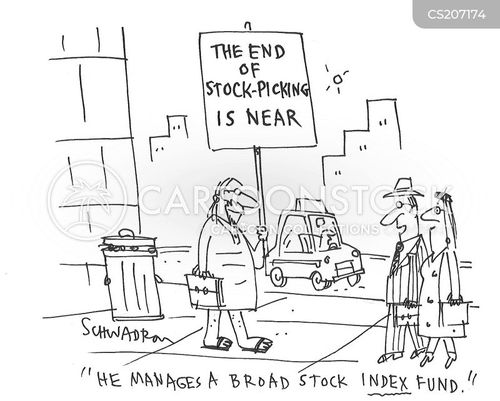
stock picking art
The Stock Picking Art: A Deep Dive into Investment Strategies
Stock picking, the art of selecting profitable stocks, has captivated investors for centuries. It's a complex process, demanding a keen understanding of market dynamics, company financials, and the ever-shifting investor sentiment. This exploration into the stock picking art dives deep, offering a comprehensive guide to mastering this potentially lucrative endeavor.
1. Defining the Stock Picking Art
Before delving into the specifics of stock picking art, let's define what we mean by it. Stock picking art is more than just guessing. It's about employing a meticulous analytical approach, integrating various perspectives to find companies with exceptional long-term growth potential. It’s about mastering the nuanced interplay of economics, finance, and the inherent unpredictability of markets. The art of stock picking demands both knowledge and intuition – a finely tuned sense for spotting promising stocks while anticipating market reactions. It is not about a magic formula; it is a holistic approach embracing stock picking art principles. Every investor must approach the stock picking art unique to their tolerance and goals.
2. Fundamental Analysis: Decoding the Company's Inner Workings

Source: amazonaws.com
The heart of the stock picking art often lies in fundamental analysis. This involves thoroughly scrutinizing a company's financial statements – income statements, balance sheets, and cash flow statements – to assess its financial health, profitability, and future prospects. The meticulous research is integral to the art of stock picking. Deep dive research, exploring the inner workings of a company, gives you valuable insight for better stock picking decisions. Knowing your companies in-depth becomes a fundamental piece in stock picking art.
How To Conduct Fundamental Analysis
- Income Statement Analysis: Scrutinize revenue streams, expenses, and profits to determine profitability.
- Balance Sheet Analysis: Assess assets, liabilities, and equity to evaluate financial stability and leverage.
- Cash Flow Statement Analysis: Evaluate cash generation, investment activities, and financing to assess long-term sustainability.
3. Technical Analysis: Deciphering Market Trends
While fundamental analysis focuses on a company's internal strength, technical analysis studies market trends to anticipate potential price movements. Technical analysis is often regarded as the opposite approach, which should be carefully intertwined for stock picking success, but both can be a critical aspect of the stock picking art. Using graphs and charts, pattern recognition, and historical data to forecast future price patterns are integral to successful technical analysis within stock picking art.
How to Implement Technical Analysis
- Identifying Patterns: Recognizing recurring chart patterns such as head and shoulders or triangles to anticipate price movements.
- Support and Resistance Levels: Identifying key price levels where demand or supply is high.
- Moving Averages: Observing trends and predicting changes using the trendline. This gives you confidence when performing the stock picking art.
4. The Art of Valuation: Ascertaining Intrinsic Worth
The stock picking art demands you accurately assess the inherent value of a stock. Numerous methods like the Discounted Cash Flow (DCF) model can give insight. There is no one perfect valuation technique, each model provides value-oriented context. The valuation aspect can lead to increased success when properly used within the stock picking art. This becomes crucial in understanding long-term investment horizons.
How To Value a Stock
- Price-to-Earnings (P/E) Ratio: Comparing a company's share price to its earnings per share.
- Price-to-Book (P/B) Ratio: Comparing market value to book value, highlighting efficiency.
- Dividend Yield: Analyzing the percentage return a dividend provides to an investor's overall stock-picking approach
5. Risk Management in the Stock Picking Art

Source: pictureperfectportfolios.com
No strategy in the stock picking art is free of risk. Effective risk management is vital, ensuring capital preservation alongside potential gains. Thorough diversification within your portfolio and adopting stop-loss orders in the investment process ensures capital safety. It allows greater flexibility in your approach and aids you in practicing better stock picking art.
6. The Power of Psychological Factors
Emotional intelligence and discipline are paramount to navigating the rollercoaster of markets in the stock picking art. Fear and greed significantly impact investing decisions. Understandably, a disciplined, analytical approach will better handle emotions inherent in stock markets and build successful investing habits through stock picking art principles.
7. Researching Economic Trends (External factors impacting Stock Picking Art)
Global trends and industry movements significantly affect a stock's performance, acting as another key element of the stock picking art. Carefully researched trends provide an added dimension and enhance long-term understanding. Economic growth forecasts, and inflation data greatly influence long-term perspectives when following the stock picking art.
8. Selecting your Stocks – Understanding the Stock Picking Art Approach
Different factors, depending on personal financial situations, determine an effective investment strategy within the stock picking art. There are countless factors to be understood. These should form the core components of your approach, tailoring your success through the practice of stock picking art. Every stock picker's portfolio reflects unique conditions and goals.

Source: athenarium.com
9. The Importance of Stock Picking Strategies and Due Diligence
No stock picking strategy or methodology, is guaranteed success without understanding market fluctuations, industry impacts and economic realities – all relevant aspects to stock picking art. Stock-picking, with its varied approaches, ultimately emphasizes understanding various market impacts, thereby practicing your stock picking art.

Source: ytimg.com
10. Continuous Learning and Adaptability within Stock Picking Art
Understanding and employing a solid grasp of the principles underlying the stock picking art involves learning continually. This continuous growth provides lasting, fundamental value, ensuring adaptation, refining strategy in response to evolving market dynamics in the art of stock picking.

Source: shopmancini.com
11. Beyond Stock Picking – How the Art of Stock Picking Impacts Wealth Building
The strategies, considerations and techniques underlying stock picking, build strong wealth through well-timed investments, with long term goals and realistic risk tolerance as a framework. Successfully utilizing the stock picking art is not a guaranteed formula. Investment goals differ among people and thus approaches vary. This emphasis ensures the longevity and impact of your stock picking strategy.
12. The Evolution of Stock Picking Art – Keeping Pace with the Market
Adapting strategies to account for emerging trends, new technologies, economic shifts, and unforeseen challenges all fall under this practice of stock picking art. Constant review, and recalibration of your methodology is part of succeeding through the dynamic world of investment in the stock picking art. This ultimately leads to continued and potentially high stock gains within a personalized framework.


